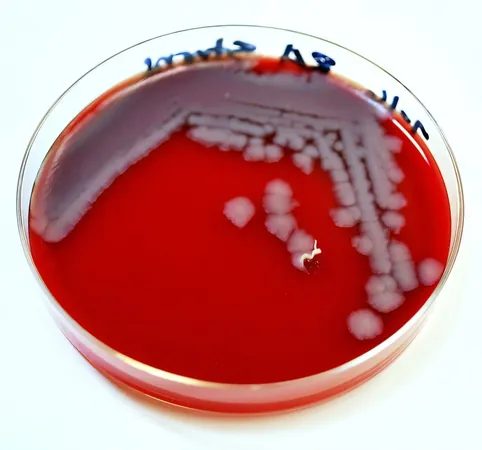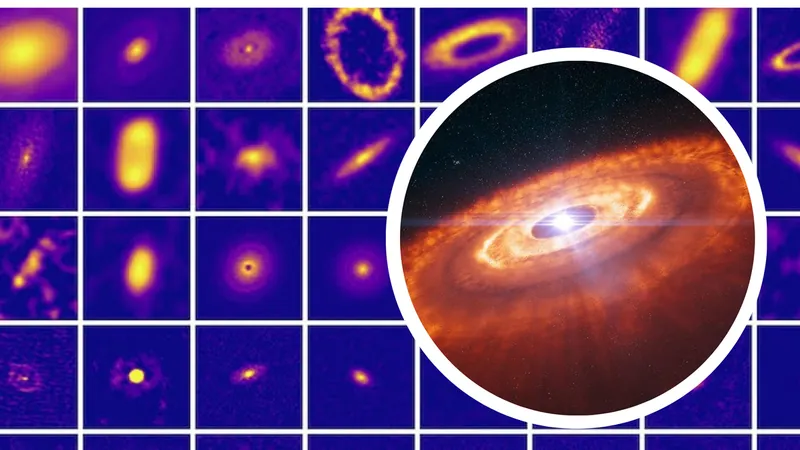
Revolutionary Algorithms Set to Unravel the Mystery of Life on Icy Ocean Worlds!
2025-03-24
Author: Arjun
Revolutionary Algorithms Set to Unravel the Mystery of Life on Icy Ocean Worlds!
For centuries, scientists have pondered the possibility of extraterrestrial life lurking in the depths of our solar system's most enigmatic ocean worlds, notably Jupiter's moon Europa and Saturn's moon Enceladus. These celestial bodies, believed to conceal vast subsurface oceans beneath icy shells, may house microbial life. However, the quest to find these elusive organisms poses significant challenges, primarily because current exploratory missions use probes that operate at great distances from these moons' surfaces.
Unlike landers that could analyze surface samples directly, spacecraft like the Europa Clipper and its predecessor Cassini conduct flybys, remaining kilometers away from the invaluable surface and interior data. This raises the question: how can we detect potential signs of life beneath the ice?
In a groundbreaking study published in the journal Earth and Space Science, researchers led by Lily Clough have unveiled a novel approach that utilizes advanced algorithms and mass spectrometry to detect biochemical signatures in gases escaping from these frozen worlds. Their technique focuses on measuring isotopes produced during essential metabolic processes such as photosynthesis and methanogenesis. By harnessing machine learning, scientists aim to discern whether the isotopic levels indicate life forms residing beneath the icy crust.
To build their algorithm, the team created laboratory conditions mimicking the environments suspected to exist on Europa and Enceladus. They experimented with brines—saltwater solutions rich in chemicals synonymous with those found within these ocean worlds. Interestingly, they introduced the sulfate-reducing bacterium Desulfotomaculum thermocisternum to some samples, which may share characteristics with potential extraterrestrial microbes.
These experiments utilized gas measurements from the brine samples, helping the researchers to simulate the expected composition of ocean worlds' exospheres and reveal how microbial activity could alter these compositions. Being cognizant of the fact that geochemical processes unrelated to biological phenomena could also affect isotope levels, the researchers varied their brine mixtures to encompass a broad spectrum of potential scenarios.
Their efforts culminated in the development of a sophisticated diagnostic tool capable of distinguishing life indicators from various geochemical data, considerably minimizing false positives. Although the researchers caution that further validation with diverse microbes is needed to enhance the model, they remain hopeful about its future applications in upcoming space missions.
As humanity stands on the brink of discovering whether we are alone in the universe, this innovative methodology may well be the key to unlocking the secrets hidden beneath the ice of our solar system's most mysterious ocean worlds! Stay tuned for updates as this remarkable research unfolds.



 Brasil (PT)
Brasil (PT)
 Canada (EN)
Canada (EN)
 Chile (ES)
Chile (ES)
 Česko (CS)
Česko (CS)
 대한민국 (KO)
대한민국 (KO)
 España (ES)
España (ES)
 France (FR)
France (FR)
 Hong Kong (EN)
Hong Kong (EN)
 Italia (IT)
Italia (IT)
 日本 (JA)
日本 (JA)
 Magyarország (HU)
Magyarország (HU)
 Norge (NO)
Norge (NO)
 Polska (PL)
Polska (PL)
 Schweiz (DE)
Schweiz (DE)
 Singapore (EN)
Singapore (EN)
 Sverige (SV)
Sverige (SV)
 Suomi (FI)
Suomi (FI)
 Türkiye (TR)
Türkiye (TR)
 الإمارات العربية المتحدة (AR)
الإمارات العربية المتحدة (AR)